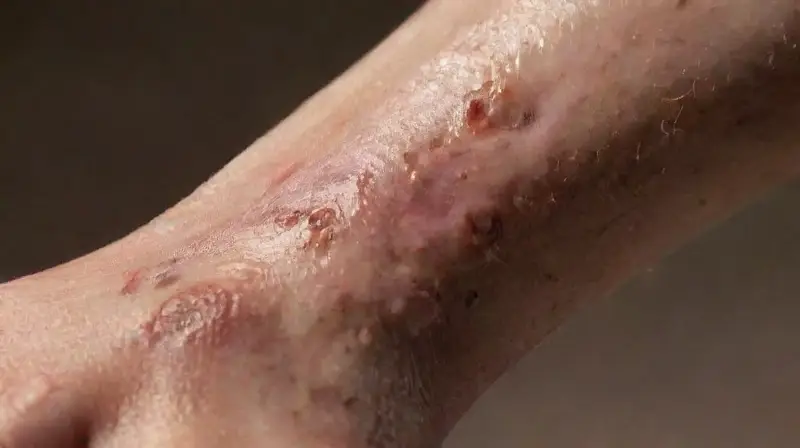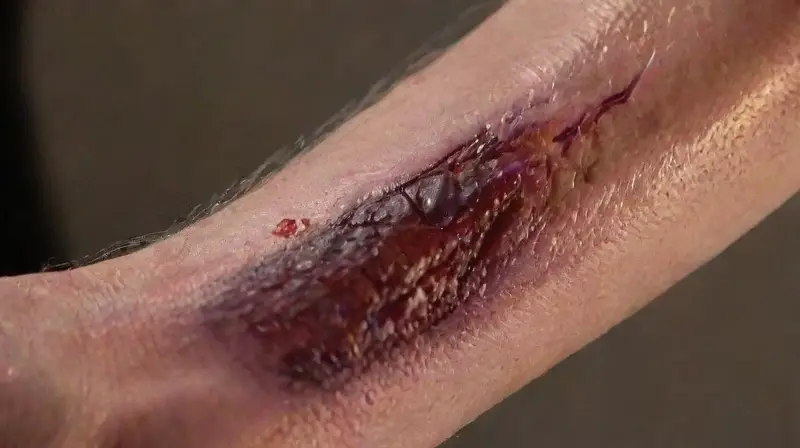Getting a tattoo is a popular form of self-expression and artistry. However, despite the meticulous care taken during and after the procedure, some individuals may experience complications. Recognizing the signs of a serious infection early can prevent further health issues and ensure proper treatment.
Infections can sometimes develop if hygiene standards are not maintained or if the body reacts adversely to the materials used. Being informed about the symptoms of a severe tattoo infection is essential for anyone considering or having recently received a tattoo.
Redness and Swelling Beyond Normal Levels
It is common to experience some redness and swelling immediately following a tattoo. However, if these symptoms persist or worsen over time, it might indicate a problem. Excessive redness that spreads beyond the tattooed area warrants medical attention.
Swelling that does not subside after a few days, especially if it becomes severe, could be a sign of infection. This can be accompanied by tenderness or a feeling of warmth in the area. These symptoms should not be ignored, as they suggest the immune system is fighting an ongoing infection.
Persistent redness and swelling may lead to the development of pus or other unusual discharges. This indicates bacterial activity and requires prompt medical intervention to prevent complications. Recognizing abnormal inflammation is crucial for early treatment.
Severe Pain and Discomfort
While some degree of pain is normal during and shortly after the tattooing process, severe or increasing pain days later is a warning sign. If the pain becomes intense and does not improve with basic care, infection should be suspected.
This pain is often localized but can sometimes radiate and worsen with movement or touch. It is important to pay attention to the severity of discomfort rather than dismissing it as normal soreness. Infection can damage tissue and deepen the problem if not treated promptly.
In some cases, pain may be accompanied by other symptoms such as fever or chills. These systemic signs indicate that the infection may be spreading beyond the skin. Immediate consultation with a healthcare provider is necessary in such cases.
Presence of Blisters and Ulcers

The development of blisters or ulcerative sores in or around the tattooed region can be an indication of a serious infection. These lesions may contain clear or pus-filled contents and can be quite painful.
Blisters that do not heal or that continue to enlarge require medical assessment. They indicate tissue damage and an ongoing immune response to an infectious organism. Leaving them untreated may result in further tissue destruction.
Ulcers are open sores that do not show signs of healing and may have a foul odor. These are often associated with bacterial or fungal infections. Proper wound care and medical assistance are essential to prevent severe tissue loss.
Fever and General Malaise
A body temperature higher than 101°F (38.3°C) coupled with a feeling of unwellness is a strong indication that the infection has become systemic. Fever occurs as the immune system responds to the invading microorganisms.
Along with fever, individuals may experience headache, fatigue, loss of appetite, or chills. These are signs that the infection is affecting the whole body, not just the skin. Ignoring these symptoms can lead to more serious health consequences.
In such cases, medical attention is vital. Treatment may involve antibiotics or other medications to control the infection and prevent the spread to other parts of the body or bloodstream.
Pus and Discharge from the Tattoo
The appearance of pus or other foul-smelling discharge is a clear marker of an infected tattoo. This fluid is typically thick, yellow, or green, and it indicates bacterial invasion of the skin tissue.
Discharge may be accompanied by redness, swelling, and tenderness. It is important not to squeeze or pick at the area, as this can worsen the infection or push it deeper into the tissue.
Seeking prompt medical advice is crucial. Proper antibiotics or topical treatments may be needed to clear the infection and prevent it from spreading further or causing permanent damage.
Skin Hardening and Warmth

When an infection becomes severe, the skin around the tattoo may feel notably hard or tender to the touch. This occurs due to abscess formation or tissue swelling as the immune system battles bacteria.
This hardened area is often hot and inflamed, signaling that the infection is causing tissue necrosis or damage. If these symptoms appear, immediate medical consultation is necessary to evaluate the extent of the infection.
Prolonged or worsening skin hardening can lead to scarring or permanent changes to the tattooed area. Early intervention can help preserve skin integrity and promote proper healing.
Lymph Node Swelling
An often overlooked symptom of a severe tattoo infection is swollen lymph nodes. These nodes, located near the infected area, act as filters for pathogens and become enlarged when fighting infection.
Swelling of lymph nodes may be felt as firm, tender lumps under the skin. Noticing their enlargement can be an important sign that the infection is systemic or spreading through the lymphatic system.
Persistent or painful lymph node swelling warrants prompt medical evaluation. Treating the underlying infection can help reduce this swelling and prevent more serious complications like lymphadenitis or sepsis.
Conclusion
Recognizing the symptoms of a severe tattoo infection is essential for prompt and effective treatment. Early signs such as persistent redness, swelling, and pain should not be ignored, as they could indicate an emerging problem that requires medical attention.
Taking immediate action when symptoms worsen or are accompanied by systemic effects like fever and chills can prevent further tissue damage and more serious health risks. Maintaining awareness and seeking help promptly can preserve both health and the appearance of the tattoo.



